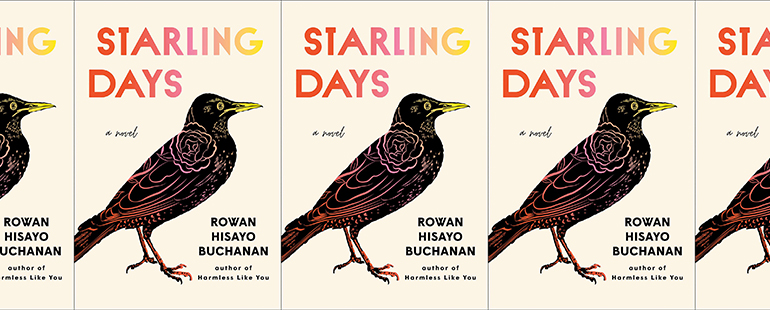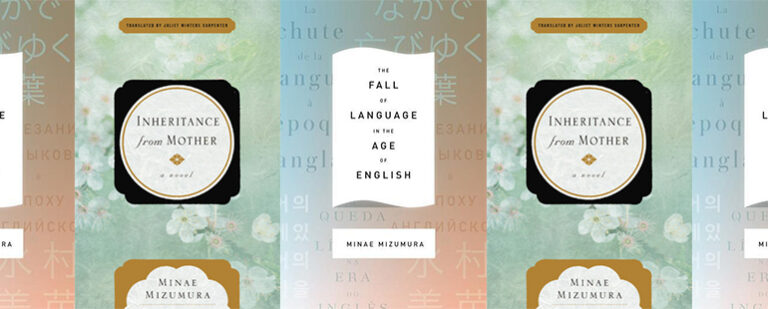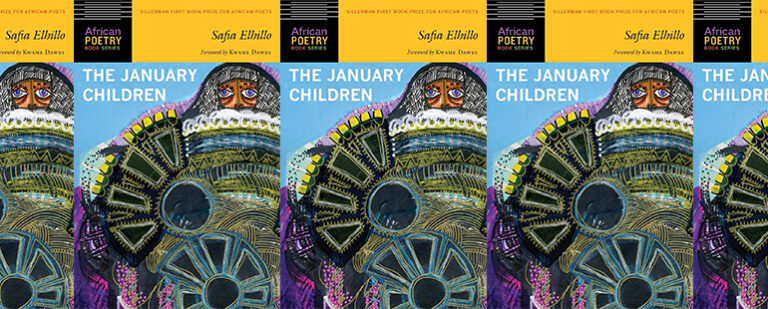The Deft Characterization of Starling Days

Rowan Hisayo Buchanan’s latest novel, Starling Days, is centered on the marriage of two characters, Oscar and Mina, who struggle with the effect mental illness has on them individually, as well as the strain it has on them as a unit. The story begins with Mina walking along a bridge in New York City; readers see that she is planning to jump, but she is stopped by a police officer. From there, we learn that she has struggled with depression and suicidal ideation for years and has been struggling against a recent wave of depression. The pair decide to temporarily relocate to London, both to fix up some flats owned by Oscar’s father and to give them a change of scenery.
Buchanan’s writing is, as always, generous and tender to the characters she brings into the world. Mina is presented in such a way as to highlight the struggle of living with mental illness, particularly depression, while avoiding depicting her as either an angel or a martyr. She acts out, she advocates for herself, and she fights against her own mind, though she is unable to do the thing that so many ask of her: Be happy. She tries to reason with her brain, laying out all in her life that should make her happy, but through her attempts to logic her way out of her own mind, it becomes clear how truly futile the exercise is. Starling Days, as a result, offers up an unabashed presentation of depression, going so far, in addition, as to explore the way individual mental illness impacts larger social units, like friends and family. A major tension in the novel is the rift that Oscar and Mina experience in their marriage as Oscar is, in many ways, unable to wrap his mind around what Mina is experiencing, though he tries, in his sometimes misguided way, to make things better.
But Oscar doesn’t stand as a direct foil for Mina, a character without depression serving as the opposite of a character with depression. In fact, the way he deals with personal and familial disruption outside of Mina’s struggles is often decidedly unhelpful. Frequently, Oscar relies more on bottling things up or avoidance than on allowing himself to face his pain in a healthy way. Like Mina, Oscar is neither an angel nor a martyr in this story. In fact, in a scene of catharsis, it is Mina who is able to be emotionally present for Oscar: she reaches out to him as he finally allows himself to cry. Thus, while Starling Days includes living with mental illness as a central theme, it, more importantly, presents a picture of how human beings—whatever the disposition of their brains—try to make sense of what they are experiencing to the best of their abilities. Both Oscar and Mina struggle to articulate what wounds them because words often fail. A recurring feeling in the novel is one of exhaustion. There are moments where Oscar ignores his wife’s messages, not out of spite, but simply out of feeling exhausted by the weight of his marriage, his work, and his family life. Mina experiences a similar feeling of exhaustion that is even further compounded by the exhaustion of hearing the same mantra coming at her from multiple sides: Be happy. When experiencing depression, these words lose meaning.
When words fail, there are other ways that human beings attempt to make sense of their world, to impose order when so much seems out of our control. Oscar orders his life using lists; Mina’s therapist asks her to keep track of her emotions by adding little upticks and downticks to a calendar. But Mina also relies on stories. Greek and Roman myths repeatedly crop up in the novel as Mina is working on a monograph about the “women who survive” their myths. She notes that most women in Greco-Roman myths don’t survive their stories, so “the women who made it out, alive and intact, seemed worth noting.” Mina continually returns to her list of women who survived but is ultimately unable to pinpoint what it is that allowed them to do so. There is no closure for Mina in these myths because there is no set characteristic we can attribute their survival to. What matters is that these women did survive and that survival looked different for each of them. This open-endedness is reflected in the novel’s ending, where readers are left only with possibility, rather than certainty, about how the future will pan out for Oscar and Mina.
It is difficult to depict mental illness—the topic itself is fraught with hazards. There is a tendency to paint those with mental illness as defined solely by their mental illness or, conversely, to want to present the story as one of overcoming said mental illness. Neither approach is beneficial or accurate. Starling Days, instead, offers a nuanced depiction of what it is to live with depression. As a result, readers feel both compassion for and frustration with the characters throughout the novel. Although you understand why each character behaves the way they do, it is a testament to Buchanan’s writing that you find yourself wanting to reach through the pages and shake them at times and to hold them tightly at others. In a time where discussing mental health is still stigmatized, the novel is a breath of fresh air.
It would, however, be a disservice to boil Starling Days down to this one issue, as Buchanan explores a number of other themes. The novel considers desire and sexuality through Mina’s eyes, while also unpacking complex family histories through Oscar’s relationship with his father. Buchanan’s prose is able to weave these narrative threads together in a way that feels organic when so many differing threads might come across as cacophonous if not handled deftly. While mental illness is a key theme in the novel, the story is propelled more by the way characters interact with one another and how their own emotional struggles affect how they treat others. Mental illness is just presented as one of many human struggles.


